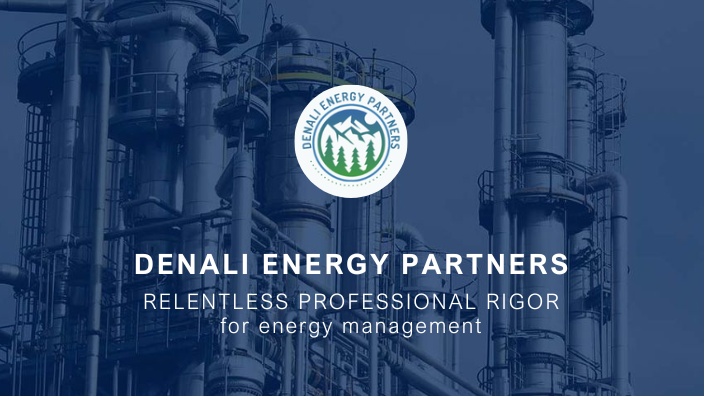The Future of Energy Prices and Challenges in the Industrial Park Sector in 2024 in Mexico and Latin America: Introduction
Denali-ep
| 14 de octubre de 2024
The Future of Energy Prices and Challenges in the Industrial Park Sector in 2024 in Mexico and Latin America
Introduction
Industrial parks in Mexico and Latin America are facing significant changes in their energy needs. With the increasing demand for energy, the necessity for sustainability, and fluctuations in prices, this article analyzes the predictions and challenges that the energy sector will encounter in industrial parks in 2024.
Current Landscape of Industrial Parks in Mexico and Latin America
Current Situation of Industrial Parks in Mexico
In Mexico, industrial parks are essential for economic growth, hosting numerous companies that rely on a reliable energy supply. However, dependence on traditional energy sources and challenges in adopting renewable energies present significant obstacles.
Context of Industrial Parks in Latin America
Regionally, Latin America presents a varied landscape regarding industrial parks. Some countries are advancing in integrating renewable energies, while others face difficulties due to limited infrastructure and fluctuating policies.
Factors Impacting Energy Prices in Industrial Parks
Growth of Energy Demand
The demand for energy in industrial parks continues to rise, driven by industrial expansion and increased production. This growing demand directly influences energy prices.
Inflation and Operating Costs
Inflation and operating costs, including infrastructure maintenance and fuel price volatility, are critical factors affecting energy prices in industrial parks.
Regulations and Energy Policies
Energy policies and government regulations play an essential role in determining energy prices. The implementation of taxes, subsidies, and environmental regulations can significantly alter costs.
Energy Price Projections for 2024 in Industrial Parks
Predictions for Mexico
For 2024, it is anticipated that energy prices in Mexico's industrial parks will experience fluctuations due to uncertainty in energy policies and slow adoption of renewable sources. Experts foresee a moderate increase in prices.
Expectations for Latin America
In the rest of Latin America, expectations vary. Countries that invest significantly in renewable energies may see stabilization or reduction in prices, while those dependent on fossil fuel imports could face increases.
Energy Challenges in Industrial Parks
Technological Innovation
Implementing new technologies is crucial for improving efficiency and reducing costs in industrial parks. However, inadequate infrastructure and insufficient investment represent significant barriers.
Environmental Sustainability
Industrial parks are major energy consumers, contributing to carbon emissions. Transitioning to cleaner energy sources is essential for reducing environmental impact.
Investments and Financing
Securing investments and financing is vital for developing the energy sector within industrial parks. Political and economic uncertainties can deter potential investors.

Impact of Renewable Energies on Industrial Parks
Implementation of Solar Projects
In Mexico and other countries in the region, solar projects are being developed within industrial parks. These initiatives not only diversify the energy matrix but also have the potential to reduce long-term costs.
Development of Wind Energy
Wind energy is gaining relevance in Latin America's industrial parks. With vast areas suitable for wind turbine installation, this source represents a significant opportunity for clean energy generation.
Energy Transition in Industrial Parks
Adoption of Clean Energies
The transition to clean energies within industrial parks is a complex process requiring structural and economic changes. However, it is essential for ensuring a sustainable future.
Effects on the Industrial Economy
The energy transition can have both positive and negative effects on the economy of industrial parks. While it may generate new jobs and opportunities, it can also displace traditional industries.
Effects of Climate Change on Industrial Parks
Extreme Weather Events
Climate change is causing extreme weather events that affect energy production and distribution within industrial parks. Droughts, hurricanes, and heatwaves are just a few examples.
Mitigation Strategies
To address these challenges, it is crucial to implement mitigation strategies. This includes improving infrastructure and adopting climate-resilient technologies.
Public Policies and Strategies for Industrial Parks
Specific Regulation and Legislation
Public policies and specific legislation for industrial parks are fundamental for developing the energy sector. Creating clear and stable regulatory frameworks is essential to attract investments.
Incentives for Renewable Energy
Governments should implement incentives to promote renewable energy development within industrial parks. This can include subsidies, tax exemptions, and support programs for research and development.
Technological Advances in Energy for Industrial Parks
Advanced Energy Storage
Energy storage is crucial for integrating renewable energies into industrial parks. Advances in batteries and other storage technologies can significantly improve the stability and efficiency of energy supply.
Smart Grid Technologies
Smart grids allow for more efficient and flexible energy management within industrial parks. These technologies can optimize consumption, reduce losses, and facilitate the integration of renewable sources.
International Collaboration for Energy Development
Regional Agreements and Alliances
International collaboration is vital to addressing the challenges facing the energy sector within industrial parks. Regional agreements and alliances can facilitate technology transfer, knowledge sharing, and resource exchange.
Participation in Global Forums
Participation in global forums allows Latin American countries to stay informed about the latest trends and best practices within the energy sector. Additionally, it fosters international cooperation to tackle common challenges.
Conclusion
The future of the energy sector within Mexico's and Latin America's industrial parks is filled with challenges and opportunities. Transitioning to cleaner, more sustainable energy sources is essential to address climate change while ensuring stable, affordable energy supply. However, this requires close collaboration among governments, businesses, and civil society as well as significant investment in infrastructure and technology.
How do solar panels work?
Solar panels convert sunlight into electricity using photovoltaic (PV) cells. When sunlight hits these cells, it generates direct current (DC) electricity, which is then converted to alternating current (AC) by an inverter for use in homes and businesses.
Do solar panels work at night?
No, solar panels do not produce electricity at night since they require sunlight to generate power. However, systems with battery storage can store excess energy generated during the day for use at night.
How long do solar panels last?
Solar panels typically have a lifespan of 25 to 30 years. Most systems come with warranties that cover them for this duration, ensuring reliable performance over time.
Can I go off-grid with solar panels?
While solar panels can significantly reduce reliance on the grid, going completely off-grid usually requires additional battery storage to provide power when sunlight is not available.
What are the benefits of using solar energy?
Solar energy is renewable and environmentally friendly, reducing reliance on fossil fuels and lowering greenhouse gas emissions. Additionally, it can lead to significant savings on energy bills and contribute to job creation in the renewable energy sector.




